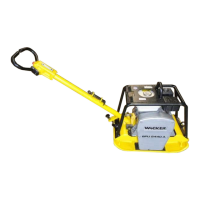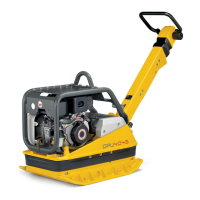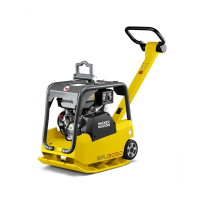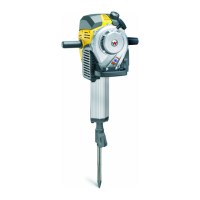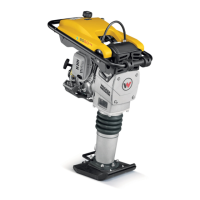General Information BPU 2440/2950 Repair
wc_tx000264gb.fm 14
3.8 Theory of Operation
See Graphic: wc_gr000085 and wc_gr001430
The vibration required for compaction is produced by the exciter (a)
which is firmly joined to the lower mass (b). The exciter contains two
shafts with eccentric weights attached to each shaft. The shafts are
connected by a sleeve gear and rotate in opposite directions. The
exciter is designed as a central vibrator with aligned vibrations. Such a
principle permits the direction of vibration to be changed by rotating the
eccentric weights (c) in relation to one another. In this way, an infinitely
variable transition between vibration in forward motion, at standstill,
and in reverse motion is possible. This process is hydraulically
controlled with the operating control handle (d) on the center pole head
(e).
The drive engine (f) is anchored to the upper mass and drives the
exciter. The torque is transmitted by means of a friction connection
through the centrifugal clutch (g) and the exciter V-belt (h).
The centrifugal clutch interrupts flow of power to the exciter at low
engine speeds and thus permits perfect idling of the drive engine. The
speed of the drive engine can be infinitely varied by way of the throttle
control lever (i).
The upper and lower (j) masses are connected to each other by four
vibration-damping shock mounts (k). This damping system prevents
the very high frequencies from being transmitted to the upper mass. As
a result, the functionality of the drive engine is retained in spite of the
high compaction performance.
The drive engine works according to the 4-stroke principle, is started
by way of a recoil starter, draws in combustion air over a dry air filter,
(l) and is air-cooled.

